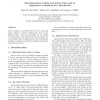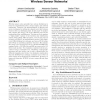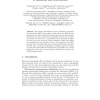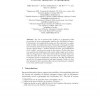75 search results - page 4 / 15 » Quantum Cryptographic Key Distribution Protocols |
CORR
2004
Springer
13 years 9 months ago
2004
Springer
Turbo coding is a powerful class of error correcting codes, which can achieve performances close to the Shannon limit. The turbo principle can be applied to the problem of side-in...
CCS
2007
ACM
14 years 3 months ago
2007
ACM
Wireless sensor nodes generally face serious limitations in terms of computational power, energy supply, and network bandwidth. Therefore, the implementation of effective and sec...
HICSS
2005
IEEE
14 years 2 months ago
2005
IEEE
The goal of a Public-Key-Infrastructure (PKI) is to prove whether a cryptographic public key is authentic for a certain user. This information is crucial for the reliability of as...
TCC
2005
Springer
14 years 2 months ago
2005
Springer
The existing unconditional security definitions of quantum key distribution (QKD) do not apply to joint attacks over QKD and the subsequent use of the resulting key. In this paper...
EUROCRYPT
2000
Springer
14 years 20 days ago
2000
Springer
The use of quantum bits (qubits) in cryptography holds the promise of secure cryptographic quantum key distribution schemes. Unfortunately, the implemented schemes are often operat...




